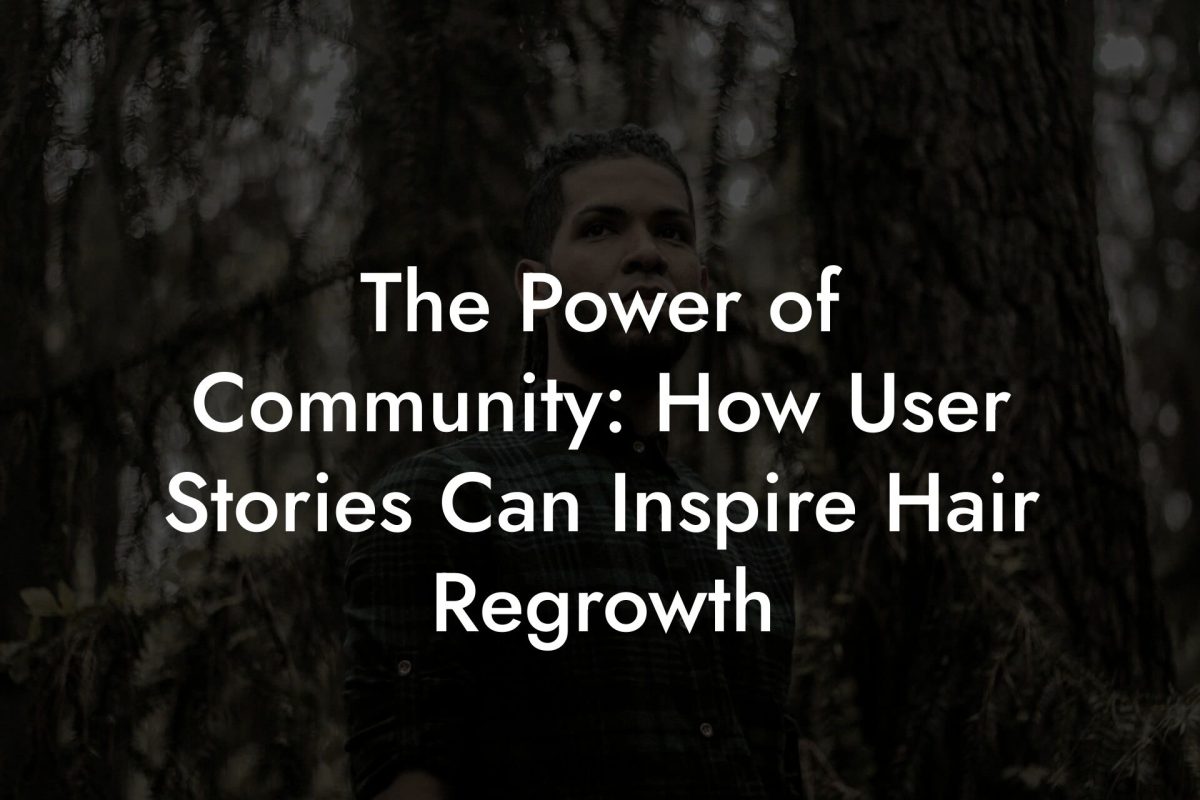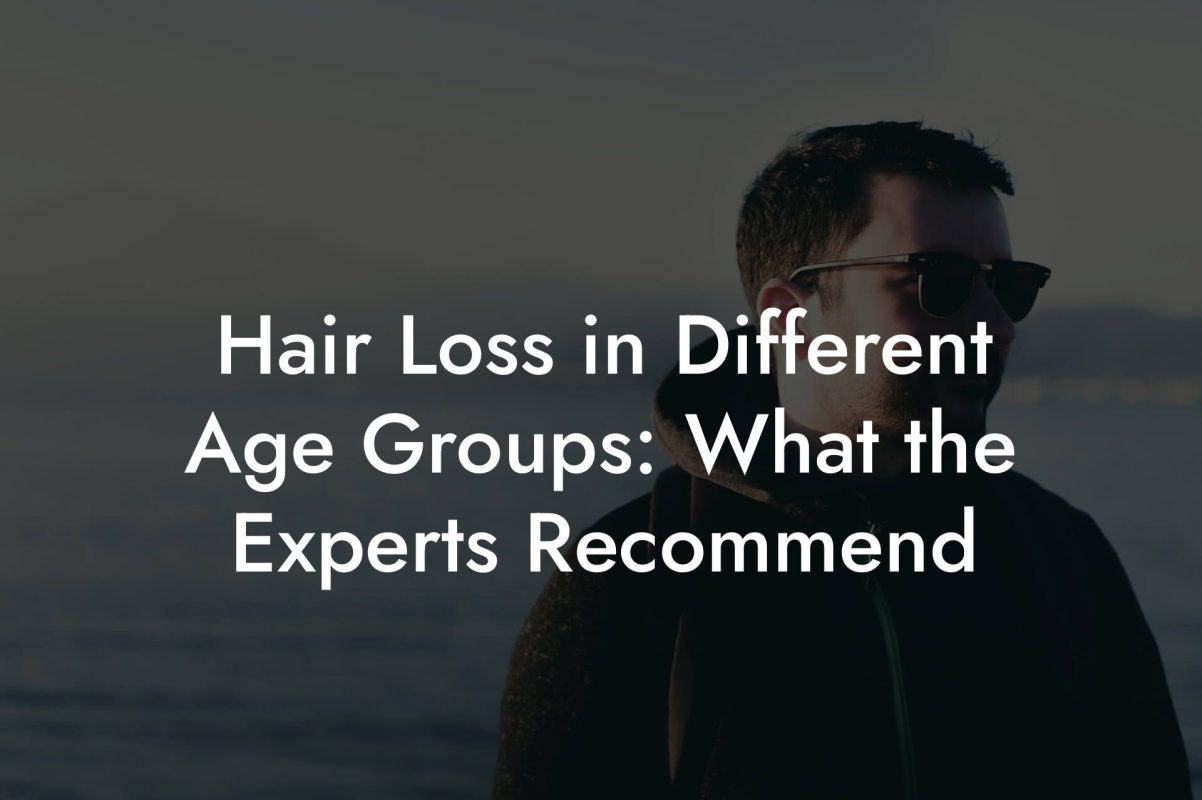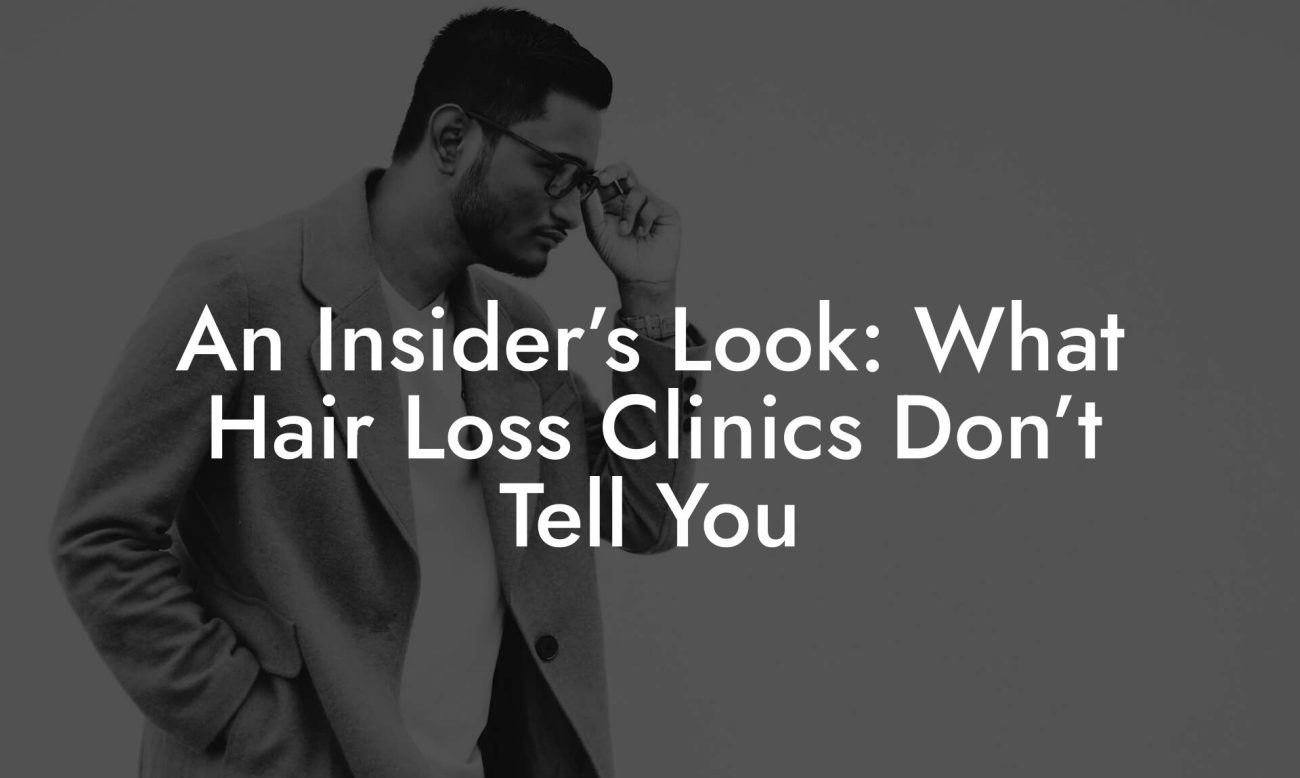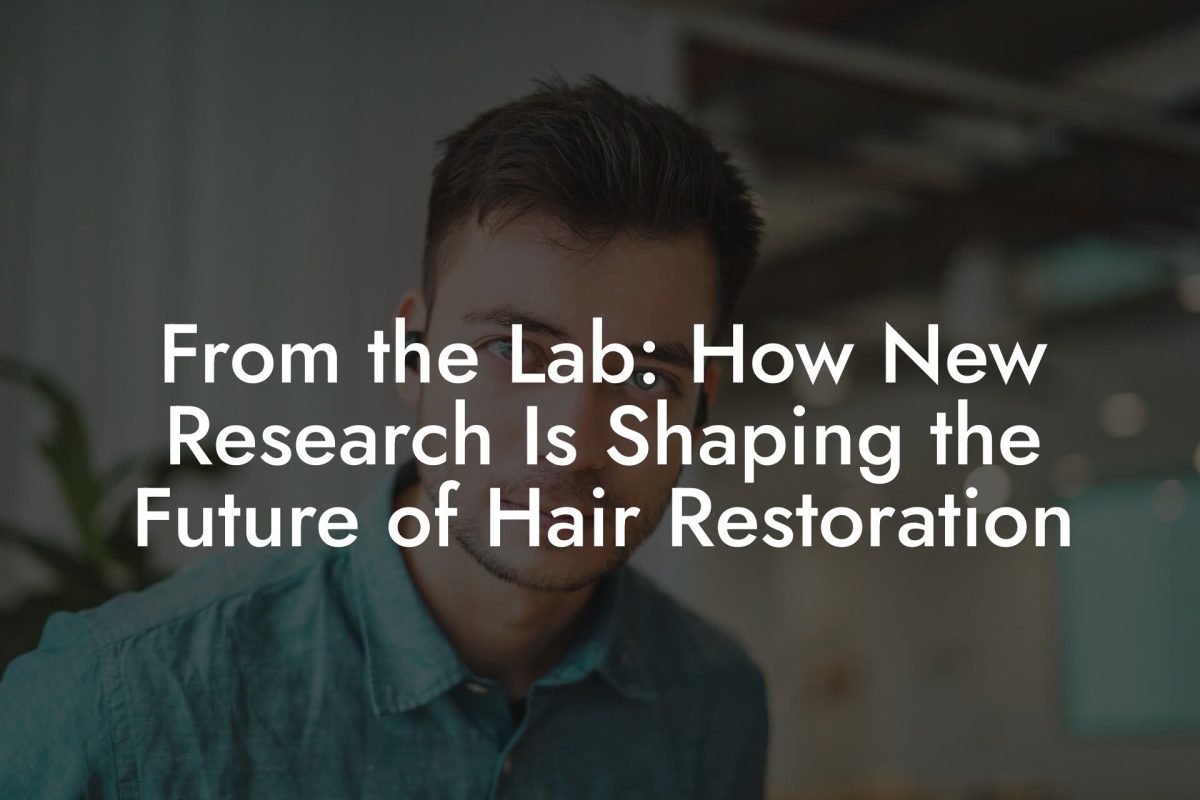Hair Loss Library
Expert Tips for Maximizing Hair Restoration Treatment Results

Ever looked in the mirror and thought, “Where did all my luscious locks go?” Welcome to the ultimate guide for maximizing hair restoration treatment results—a no-nonsense, refreshingly humorous deep dive designed specifically for the modern man. At Mane Matrix, we believe that reclaiming your mane should be as empowering as it is practical, without the awkward medical jargon or exorbitant price tags. Get ready to discover expert tips, cutting-edge science, and everyday hacks that cater to the realities of your millennial and Gen Z lifestyle.
Understanding the Landscape of Hair Restoration
Hair loss is one of those uninvited party crashers that can stick around for far too long. Whether you're noticing thinning patches, receding lines, or just an overall lack of volume, understanding why your hair is playing Houdini is the first step towards reclaiming your confidence. Modern hair restoration is not just about plugging gaps—it’s about taking a holistic look at your health, lifestyle, and genetic blueprint to craft a tailored approach to hair regeneration.
For many men, hair loss can feel like a personal betrayal. One minute you’re rocking a dense, full head of hair, and the next, you’re left scrolling through miracle cures online. But before you dive headfirst into a sea of “magic” solutions, it’s crucial to gain a comprehensive understanding of how hair restoration treatments work, what to expect, and which methods are scientifically backed versus those that are nothing more than wishful thinking.
The good news? Science is on your side. From proven medical treatments to innovative non-invasive therapies, there’s a host of expert-approved strategies out there that can help you fight back against hair loss. Let’s break down the essentials so you can make informed decisions on your hair restoration journey.
The Science Behind Hair Restoration Treatments
When it comes to hair restoration, science plays the role of both detective and teacher—helping to decipher the mystery of hair loss and guiding you toward effective treatments. The hair on your head follows a cycle of growth, rest, and shedding, and disruptions to this cycle can result in thinning or balding. Factors like genetics, stress, dietary deficiencies, and hormonal imbalances all play a part.
A few key scientific players in hair restoration include:
- Androgenetic Alopecia: Often referred to as male pattern baldness, this genetic condition is the most common cause of hair loss in men. It involves the influence of hormones like dihydrotestosterone (DHT), which shrinks hair follicles over time.
- Platelet-Rich Plasma (PRP): A treatment that uses your own blood components to stimulate hair follicles. PRP is often used in combination with other therapies to enhance regrowth by boosting circulation and triggering natural healing processes.
- Minoxidil and Finasteride: These are two of the most widely recognized FDA-approved medications for fighting hair loss. While minoxidil is a topical solution that increases blood flow to the scalp, finasteride works internaly to block the hormone DHT.
- Low-Level Laser Therapy (LLLT): A non-invasive technique where specific wavelengths of light are used to stimulate hair follicles and promote regrowth. It’s like giving your scalp a spa day—only with lasers!
Understanding these scientific foundations can help debunk myths and empower you to choose treatments that work. Whether you’re considering medications, therapies like PRP, or even combining multiple approaches, knowing how each method tackles hair loss will help you design a comprehensive restoration strategy.
Conventional Hair Restoration Treatments: What’s Involved?
Let’s start with the heavy hitters of hair restoration. Conventional treatments have been honed over years of clinical research and are considered the gold standard for managing male hair loss. They may not be overnight miracles, but their proven track records make them a reliable option for many.
Medications: Minoxidil and Finasteride
We can’t talk about hair restoration without mentioning the dynamic duo of minoxidil and finasteride. Minoxidil, a topical solution that increases blood flow to hair follicles, is a favorite for kickstarting dormant follicles into action. Finasteride, on the other hand, works behind the scenes by reducing DHT levels—one of the key culprits in male pattern baldness.
Both treatments require consistency and patience to see visible results; think of them as investments in your hair’s future. While some users report noticeable improvements within a few months, others may need to continue treatment for up to a year to fully appreciate the benefits.
Platelet-Rich Plasma (PRP) Therapy
PRP therapy involves drawing a small amount of your blood, processing it to concentrate the platelets, and re-injecting this enriched plasma into your scalp. The idea is to harness your body’s natural healing factors to stimulate hair follicle growth. It’s a bit like letting your blood work overtime as your own personal hair restoration squad.
Many men find PRP to be a game-changer, especially when standard medications yield only limited results. While PRP therapy might require multiple sessions, many users praise its ability to add volume and revitalize thinning hair.
Hair Transplant Surgery
For those looking for more permanent solutions, hair transplant surgery remains an option. This procedure involves relocating hair follicles from areas of denser growth (often the back of the head) to thinning or bald spots. Modern techniques such as Follicular Unit Transplantation (FUT) and Follicular Unit Extraction (FUE) have significantly reduced downtime and improved aesthetic outcomes.
While the thought of surgery can be intimidating, it’s important to remember that hair transplants today are precision procedures. They not only restore hair but also create a natural-looking hairline that complements your facial features—a true boost to your self-assurance.
Complementary and Integrative Approaches for Stellar Results
Alongside conventional treatments, there’s a world of complementary therapies that can help supercharge your hair restoration journey. These “plus” methods provide support to your overall hair health through natural, integrative practices.
Scalp Massage and Acupressure
Think of a scalp massage as giving your head a mini-vacation. Regular scalp massages can help increase circulation, reduce stress, and potentially stimulate dormant hair follicles. Whether you schedule professional sessions or simply treat yourself to a nightly self-massage with nourishing oils, this simple practice can make a world of difference.
Acupressure techniques, derived from traditional Chinese medicine, focus on pressure points on the scalp to promote energy flow and stimulate hair growth. These holistic practices can be incorporated into your daily routine, letting you reap both the physical and mental benefits.
Nutritional Supplements and Herbal Remedies
Your hair is only as healthy as the fuel you provide your body. Specific vitamins and nutrients—such as biotin, zinc, iron, and vitamins D and E—are essential for maintaining strong, vibrant hair. Supplements aren’t magic pills, but when combined with a balanced diet, they can help address nutritional deficiencies that may contribute to hair thinning.
Additionally, herbal remedies like saw palmetto and pumpkin seed oil have gathered a cult following among men battling hair loss. These natural supplements are believed to inhibit DHT production at the follicle level, making them a popular adjunct to more conventional treatments.
Mind-Body Practices: Stress Reduction and Beyond
Stress is a notorious hair loss trigger, capable of sending your scalp into a frenzy of premature shedding. Incorporating mind-body techniques such as meditation, yoga, and deep breathing exercises can help keep stress at bay. Not only do these practices soothe your mind, but they also promote better sleep and overall wellness—factors that indirectly contribute to healthier hair growth.
The bottom line? A well-rounded hair restoration plan doesn’t just fix what’s on the outside—it nurtures your entire being.
Lifestyle Choices That Enhance Hair Regrowth
It might seem obvious, but you are what you eat—and what you do matters, too. Your daily choices, routines, and habits have a profound impact on hair health. Here are some lifestyle hacks that can help nurture your locks for the long haul.
The Anti-Inflammatory Diet
Chronic inflammation can wreak havoc on your hair follicles, so keeping it in check is crucial. Embrace an anti-inflammatory diet loaded with colorful fruits, leafy greens, nuts, and healthy fats like those found in avocados and fatty fish. Reducing refined sugars and processed foods in your diet not only benefits your hair but also boosts your overall vitality.
Hydration: The Unsung Hero
Water may seem mundane, but it’s one of the most underrated allies in the fight against hair thinning. Staying well-hydrated ensures that your follicles and scalp maintain optimal moisture levels for healthy growth. Aim for at least eight glasses a day—your hair will thank you for it.
Regular Exercise and Scalp Care
Exercise keeps your blood pumping, which means more oxygen and nutrients delivered to your hair follicles. Whether it’s a morning run, weight training session, or yoga flow, regular physical activity supports overall circulation and can indirectly improve hair health.
Beyond cardio, consider investing in a quality scalp care routine. This can include everything from a gentle shampoo and conditioner designed to promote hair growth to periodic deep-cleansing treatments that remove buildup and unclog hair follicles.
Sleep and Recovery
Let’s face it—nobody grows their best hair during late-night Netflix binges. Adequate sleep not only helps with mental clarity and recovery but also allows your body time to repair and regenerate hair tissue. Aiming for 7-9 hours of quality sleep each night can set the stage for robust hair regeneration.
Technological Innovations and Non-Invasive Procedures
The world of hair restoration is far from static. With rapid advances in technology, new non-invasive procedures are emerging that offer promising results without the downtime of surgery. These innovations are particularly appealing if you’re looking for effective treatments that fit seamlessly into a busy lifestyle.
Low-Level Laser Therapy (LLLT)
LLLT devices have become a popular, at-home treatment for hair loss. These devices use focused light energy to stimulate hair follicles, promoting cellular repair and boosting regrowth. Whether you opt for a laser comb, cap, or helmet, incorporating LLLT into your routine can give your hair that extra nudge toward health.
Users appreciate the convenience and non-invasiveness of these devices—no needles, no surgery, just consistent, gentle stimulation. It’s a tech-driven, user-friendly approach that meshes well with the digital lifestyles of millennials and Gen Z.
Robotic Hair Transplantation
For those considering surgery, modern hair transplant procedures have been revolutionized by robotic assistance. This innovative technology allows for highly precise extraction and implantation of hair follicles, minimizing scarring and speeding up recovery time. By harnessing the accuracy of robotics, surgeons can achieve a natural density that looks and feels genuinely authentic.
The beauty of these technological advancements is that they offer real solutions with minimal disruption to your day-to-day life. Whether you’re looking for a less invasive boost or contemplating a more permanent fix, today’s tech-driven options are designed to work with you, not against you.
Personalizing Your Hair Restoration Journey
No two heads of hair (or scalp conditions) are identical, which means your treatment plan should be just as unique as you are. Personalization is the name of the game, and combining multiple strategies can yield superior results compared to one-size-fits-all approaches.
Start With a Comprehensive Assessment
The first step in any personalized hair restoration plan is understanding the root cause of your hair loss. Schedule a consultation with a trusted specialist who can assess your hormonal levels, nutritional status, genetic predispositions, and overall scalp health. Armed with this knowledge, you and your expert can design a plan that fits your unique needs and lifestyle.
Set Realistic, Measurable Goals
It’s essential to define what success looks like for you. Whether it’s stopping the progression of hair loss, noticing increased density, or even regaining a full head of hair, having clear, actionable goals can help keep you motivated. Document your starting point with photos or measurements to track progress over time.
Integrate Multiple Modalities
Combining treatments can yield synergistic effects—think of it like assembling your own dream team. Many men find that pairing conventional treatments (such as minoxidil or PRP) with complementary strategies (like nutritional adjustments, scalp massages, and low-level laser therapy) accelerates the journey to hair restoration. Experimenting and adjusting the mix until you find what best suits your lifestyle and needs is key.
Stay Consistent and Adaptable
Consistency is crucial in any restoration journey. Developing a daily regimen that includes your selected treatments, lifestyle practices, and recovery protocols will pay off over time. Recognize that what works today might require tweaking in the future. Regular check-ins with your specialist can help ensure your plan remains effective as your life evolves.
Avoiding Common Pitfalls in Hair Restoration
As with any wellness endeavor, the road to hair restoration is riddled with misinformation and quick-fix promises. Being aware of these common pitfalls will help you steer clear of treatments that are more hype than help.
Beware of Miracle Cures
One of the most common pitfalls in the world of hair restoration is the allure of miracle cures. If a product or treatment promises instant, dramatic results with zero effort, it’s probably too good to be true. Instead, stick to methods that have scientific backing and solid clinical evidence. Remember, successful hair restoration is usually a marathon rather than a sprint.
Don’t Neglect the Basics
In the quest for advanced treatments, it’s easy to overlook the fundamental practices that support hair health. Proper nutrition, regular exercise, adequate sleep, and stress management form the bedrock of any effective treatment plan. Neglecting these factors can undercut even the best technological interventions.
Avoid Over-Treatment
While it’s tempting to chase every new trend in hair restoration, over-treating your scalp can lead to irritation, inflammation, or even damage. Follow your expert’s advice and give your body the time it needs to respond to any intervention before layering on additional treatments.
Stay Informed, Stay Critical
The internet is a treasure trove of information—and misinformation. Make sure to rely on reputable sources, clinical studies, and certified professionals when evaluating new treatments. An informed approach will help you make decisions that are both safe and effective.
Real-Life Stories: Transformations in Hair Restoration
Sometimes the best inspiration comes from real stories. Below are a few transformations that highlight how a combination of expert advice, patience, and innovative treatments can change the game in hair restoration.
Case Study 1: The Gradual Comeback
Mark, a 32-year-old graphic designer, noticed his hairline retreating gradually despite a healthy lifestyle. After consulting with a specialist at Mane Matrix, Mark started a regimen that included minoxidil, a balanced diet rich in protein and antioxidants, and regular scalp massages. Over the course of a year, not only did Mark’s hair density improve significantly, but he also found that his overall confidence soared. His story is a testament to the power of consistency and a well-rounded approach.
Case Study 2: Reclaiming Confidence Through Technology
Rick, a 40-year-old tech enthusiast, wasn’t ready to accept hair loss as his new normal. He decided to try low-level laser therapy coupled with PRP injections. The innovative technology worked hand-in-hand with scientifically backed treatments to stimulate his hair follicles. Within several months, Rick noticed less shedding and more new growth, and his hairline began to fill out. His journey illustrates that embracing both technology and traditional methods can lead to remarkable improvements.
Case Study 3: A Holistic Makeover
For Chris, a busy young professional in his late 20s, dealing with hair thinning was not just about aesthetics—it was about reclaiming his self-image. Chris combined stress reduction techniques (like meditation and regular exercise) with a nutritional overhaul, complemented by prescription medications approved by his doctor. His transformation was not just physical but mental, proving that a holistic, integrative approach can redefine both your hair and your attitude.
These stories remind us that the path to hair restoration isn’t linear and that each journey is as unique as the person embarking on it. Whether you’re looking for subtle improvements or dramatic changes, there’s a strategy out there that can work wonders.
Resources and Community Support: Your Next Steps
Embarking on a hair restoration journey can sometimes feel like stepping into uncharted territory. That’s why leaning on a community of experts and fellow men who understand your struggles is invaluable. Here’s how to take the next step:
Tap Into Expert Analysis
At Mane Matrix, our team of specialists is dedicated to providing clear, science-backed insights into hair loss treatment options. From personalized consultations to regular updates on the latest advancements, we’re here to equip you with the knowledge needed to make informed decisions.
Join Online Communities
Whether it’s a dedicated forum, a social media group, or an informal chat among friends, finding a community where you can share experiences and advice is key. Exchanging tips, celebrating milestones, and even commiserating over bad hair days can remind you that you’re not alone in this journey.
Leverage Trusted Resources
The world of hair restoration is vast, but not all sources are created equal. Rely on reputable blogs, certified professionals, and peer-reviewed studies to guide your decisions. Bookmark trusted websites and subscribe to newsletters that keep you updated on the latest trends and breakthroughs.
Take Action, One Step at a Time
While the journey to hair restoration can seem overwhelming, remember that progress happens one step at a time. Set realistic goals, track your improvements, and don’t hesitate to revise your strategies as needed. The collective wisdom of experts and community support provides a roadmap that’s both comprehensive and uniquely adaptable to your lifestyle.
Hair Restoration FAQs: Your Burning Questions Answered
We know you might have a few pressing questions about hair restoration treatments and strategies. Here are some of the most frequently asked questions, answered by experts at Mane Matrix.
1. What are the most effective hair restoration treatments available today?
Effective treatments include FDA-approved medications like minoxidil and finasteride, as well as non-invasive options such as low-level laser therapy and PRP injections. The ideal treatment often involves a combination of these methods, tailored to your unique needs.
2. How long does it typically take to see noticeable improvements?
Results vary depending on the treatment method and individual factors. While some men begin noticing changes within a few months, significant improvements can take up to a year with consistent application.
3. Are there any non-medical approaches that can help with hair regrowth?
Absolutely. Integrative strategies such as a nutrient-rich diet, regular scalp massages, stress reduction through meditation or yoga, and targeted nutritional supplements can complement conventional treatments and boost overall hair health.
4. Can I use multiple treatments at once?
Combining treatments often yields the best results. However, it’s essential to consult with a hair restoration specialist to develop a safe, personalized regimen that takes into account potential interactions and your particular condition.
5. Is hair restoration only about genetics?
While genetics play a significant role in hair loss, other factors such as lifestyle, stress, nutrition, and overall health also significantly impact hair health. A holistic approach addresses all these angles to maximize treatment results.
6. What role does technology play in modern hair restoration?
Technological advances, including low-level laser therapy and robotic-assisted hair transplants, have revolutionized the field by offering effective, non-invasive alternatives to traditional methods. These innovations are designed to complement conventional treatments and enhance overall outcomes.
7. Are there any risks involved with these treatments?
Like any medical or cosmetic intervention, there are potential risks. These may include minor irritation, temporary shedding, or, in rare cases, more significant side effects. A consultation with a specialist can help mitigate risks by customizing your treatment plan.
8. How do I know which treatment is right for me?
A comprehensive assessment by a hair restoration expert is key. They can help identify the underlying causes of your hair loss and recommend the combination of treatments that will best meet your needs and lifestyle.
9. Are there any lifestyle changes that can help maximize my treatment results?
Yes, maintaining a balanced diet, staying hydrated, managing stress, and ensuring regular exercise and sleep can all enhance the effectiveness of your hair restoration treatments.
10. Where can I find reliable information about advanced hair restoration techniques?
Trusted sources include peer-reviewed medical journals, professional consultations, and reputable websites like Mane Matrix that specialize in providing up-to-date, evidence-based insights on hair restoration.
Your Journey to a More Confident Mane
Every strand tells a story, and your journey to hair restoration is no different. It’s about reclaiming confidence, embracing change, and nurturing your body from the inside out. Whether you’re just starting out or are already deep into your treatment plan, remember that real progress is the result of informed choices and consistent effort.
Persist through the challenges, celebrate the milestones, and most of all, enjoy the transformation both inside and out. Your hair restoration journey is uniquely yours—a perfect blend of science, self-care, and a touch of humor to keep the spirits high even on the toughest days.
At Mane Matrix, we’re excited to be a part of your journey. With expert tips, a supportive community, and scientifically proven methods, you have all the tools necessary to achieve the mane you deserve. Now’s the perfect time to step forward, embrace the process, and let your hair—and confidence—shine!
If you loved this article... Dive deeper into the world of mens hair loss with our most popular sections. If there is anything you think is missing or anything you would love for us to write about, just give us a shout.
Expert Interview: Leading Dermatologists Discuss Men’s Hair Loss Solutions
Case Study: How One Man Reversed His Hair Loss Naturally
Hair Loss FAQs: Your Top Questions Answered by Experts
Behind the Scenes: A Day in the Life of a Hair Transplant Surgeon
Success Stories: Real Men Share Their Hair Regrowth Journeys
Debunking Hair Loss Myths: Insights from Top Trichologists
The Role of Genetics: Experts Weigh in on Inherited Hair Loss
How Lifestyle Changes Made a Difference: Inspiring Hair Regrowth Stories
In-Depth Q&A: What Every Man Should Ask Before a Hair Transplant
Roundtable: Experts Debate the Best Non-Surgical Hair Loss Treatments
From the Lab: How New Research Is Shaping the Future of Hair Restoration
Personal Journeys: Overcoming Hair Loss and Embracing Confidence
The Ultimate Hair Loss Q&A: Everything You Need to Know
An Insider’s Look: What Hair Loss Clinics Don’t Tell You
Expert Tips for Maximizing Hair Restoration Treatment Results
Hair Loss in Different Age Groups: What the Experts Recommend
Addressing Scalp Concerns: A Comprehensive FAQ for Men
Analyzing Competitor Gaps: How Mane Matrix Stands Out in Hair Loss Content
The Power of Community: How User Stories Can Inspire Hair Regrowth
Future Forecast: What Experts Predict for Men’s Hair Loss Treatments
















